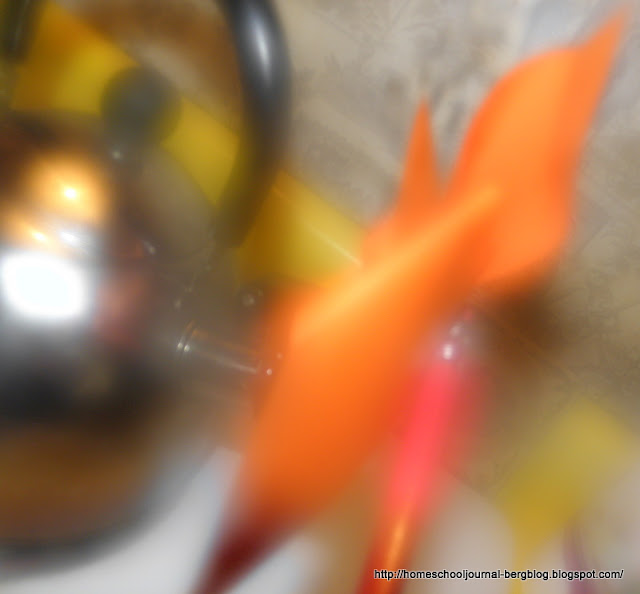Railroad Trains, Part I Introduction to Steam Engines
History of Land Transportation
We began our study of railroad trains by looking at them in a historical context. We talked about all sorts of land transportation, including their positive aspects and their negative aspects. We then made a timeline of train history. We will be adding other bits of history as we go along to put it in context.
Steam and Expansion
Next we examined the power of steam. How can just heated water produce enough force to move a railroad train?
First we made a pinwheel using a template (fold in and use a pushpin to go through the paper and into an eraser of a pencil). We boiled some water in an open pot and in our teakettle and took the pinwheel and held it over the pot of steaming water. It didn't move much because the steam needs to be confined in order to generate enough pressure to move the pinwheel.
Then we did the same process with the teakettle. The steam does not leave this container as freely as the pot because it must go through the spout. This generates pressure and can cause the pinwheel to move. If the teakettle did not have any outlet, it would explode due to the pressure. We talked about how since steam is hotter than plain water, that it expands to fill 1,600 times more space than the water boiled to make it. If you were to take a one nickle and let it expand at the same rate that water does than it would become $80.00 or a 16 foot pile if the nickles were piled one on top of the other.
A steam engine injects the steam into cylinders to move pistons. The piston is connected to a rod and as the steam goes in and out of the cylinder, the rod moves. This rod is connected to the driving wheels of the train and as the rod moves, the wheels roll.
Then we did the same process with the teakettle. The steam does not leave this container as freely as the pot because it must go through the spout. This generates pressure and can cause the pinwheel to move. If the teakettle did not have any outlet, it would explode due to the pressure. We talked about how since steam is hotter than plain water, that it expands to fill 1,600 times more space than the water boiled to make it. If you were to take a one nickle and let it expand at the same rate that water does than it would become $80.00 or a 16 foot pile if the nickles were piled one on top of the other.
A steam engine injects the steam into cylinders to move pistons. The piston is connected to a rod and as the steam goes in and out of the cylinder, the rod moves. This rod is connected to the driving wheels of the train and as the rod moves, the wheels roll.




